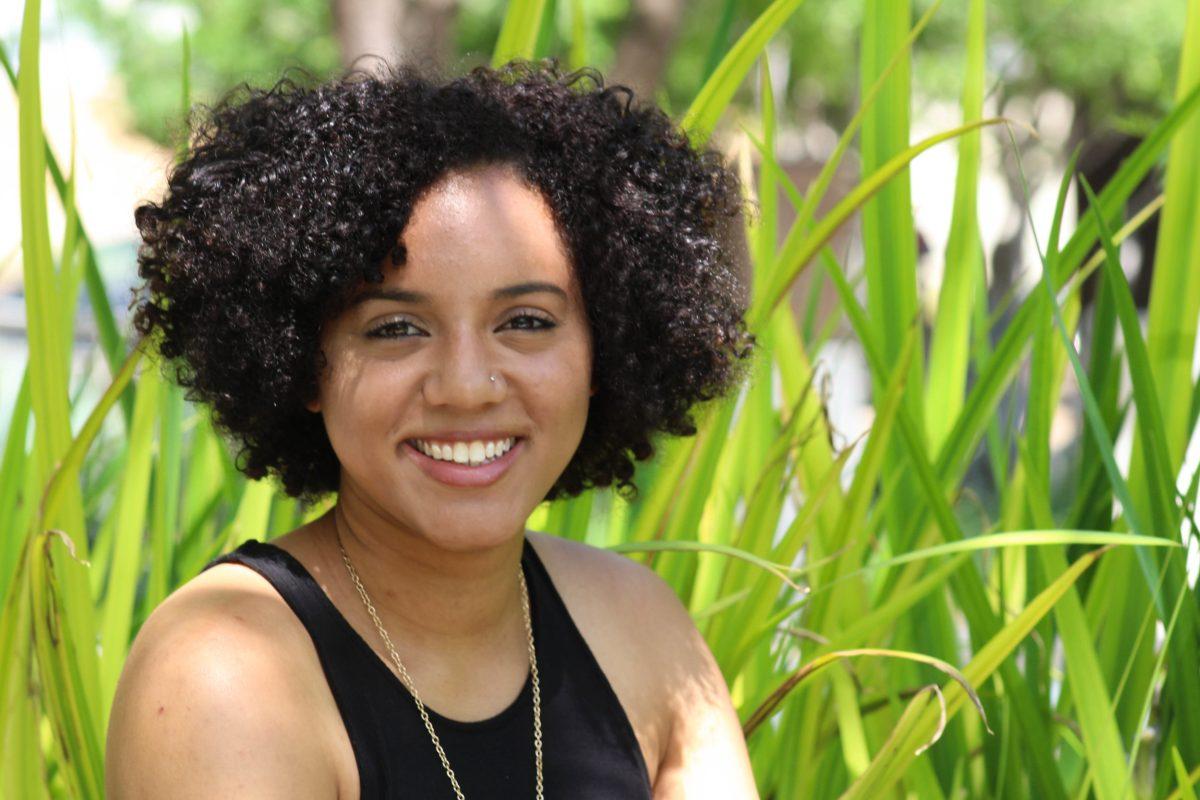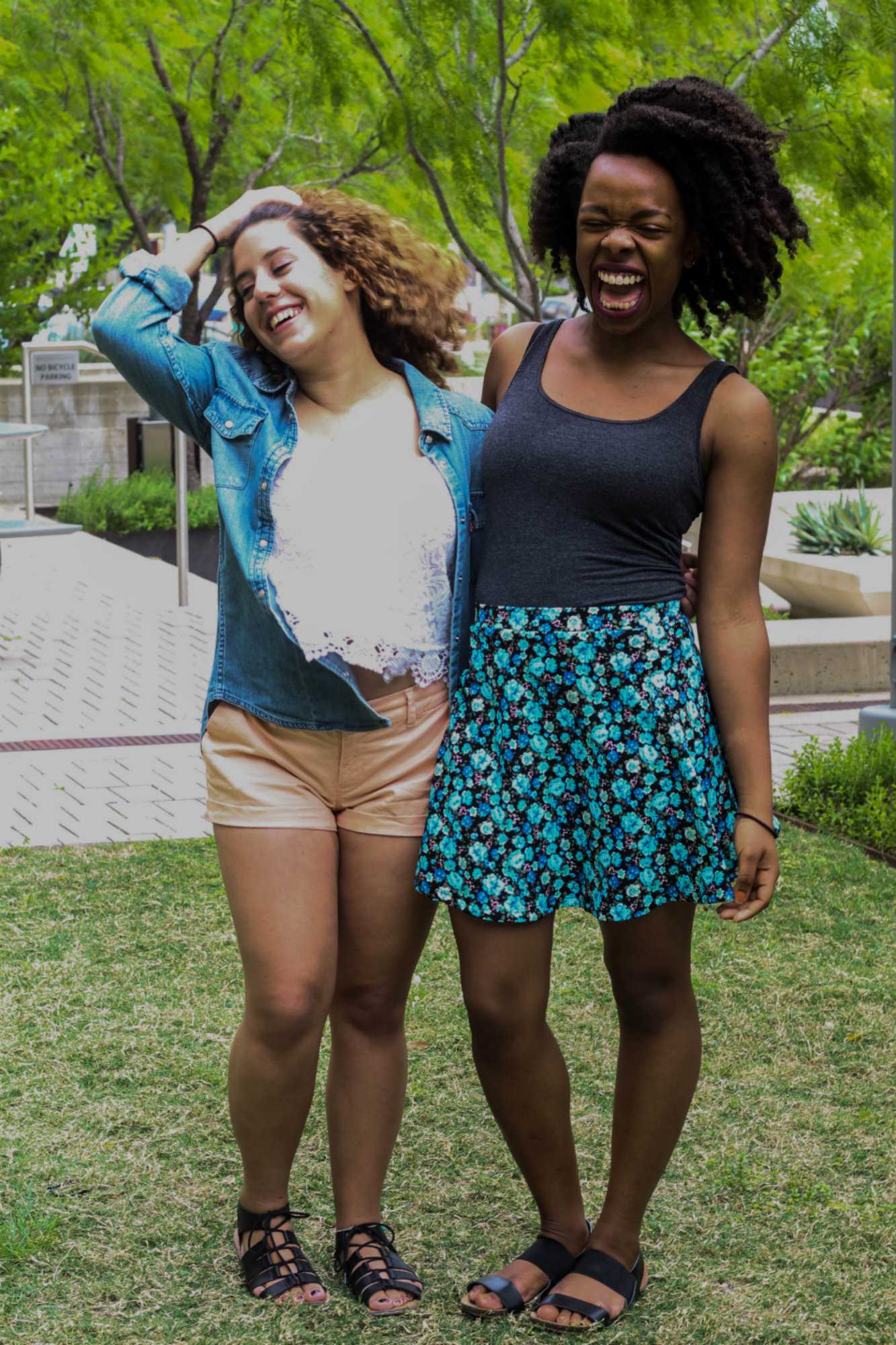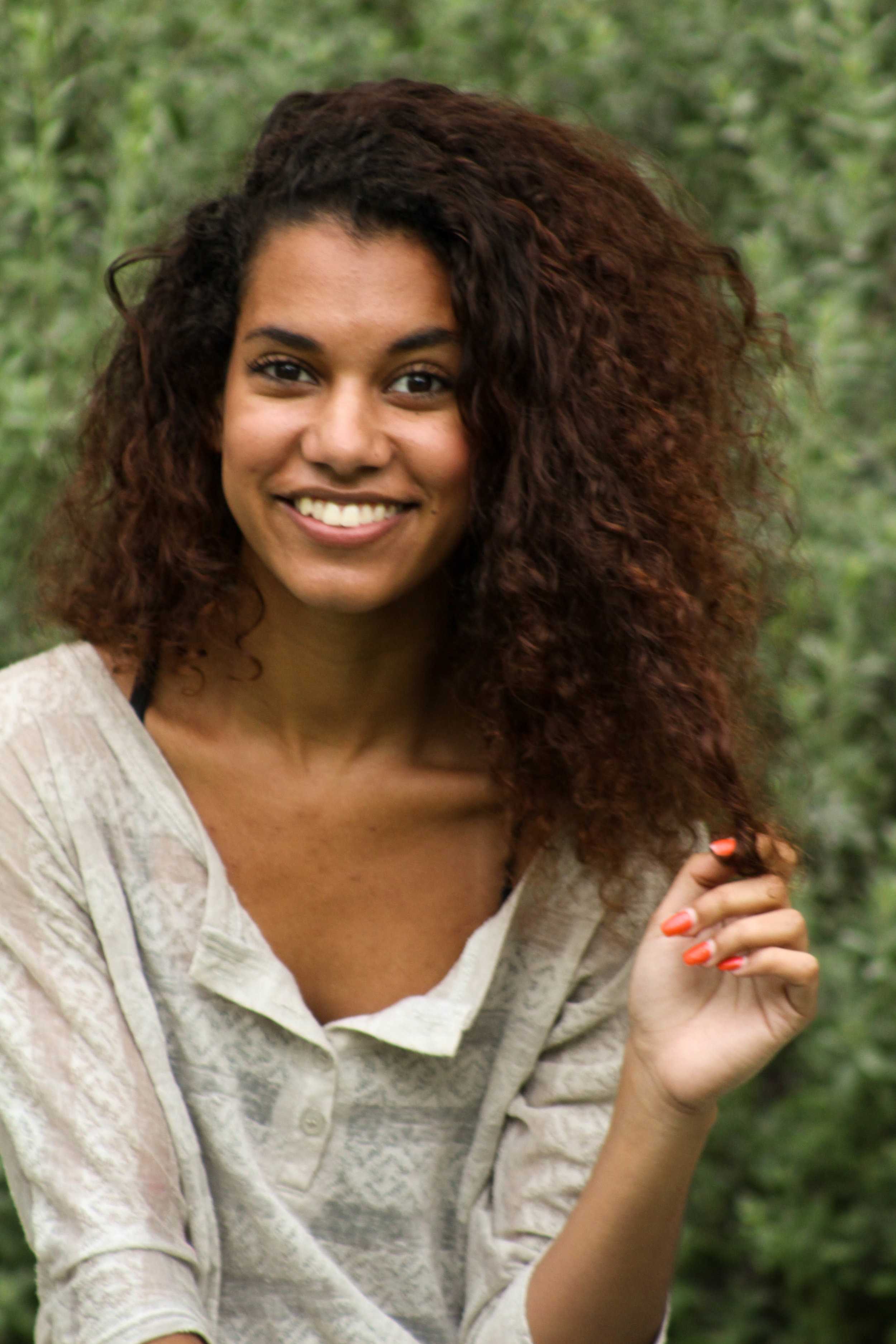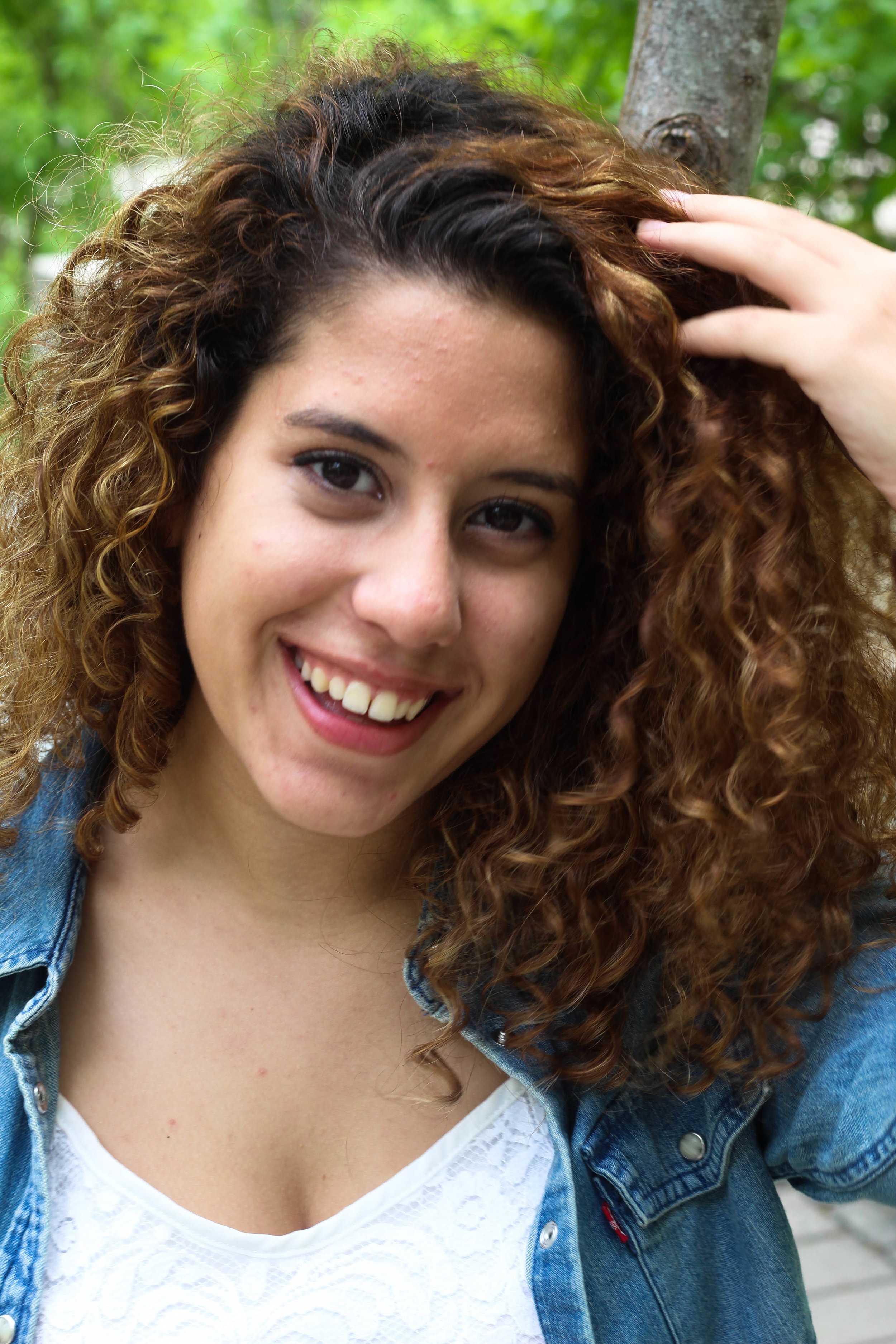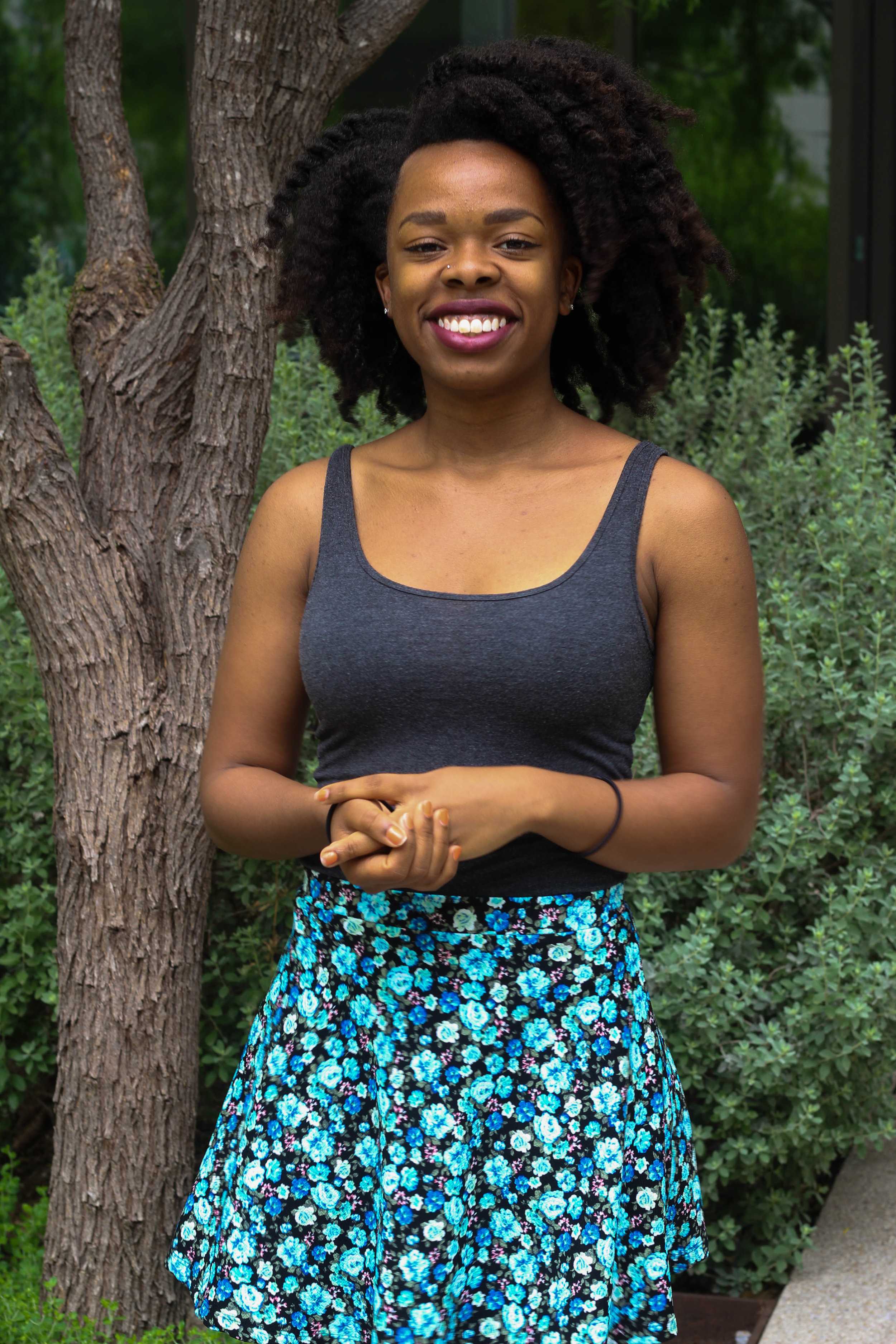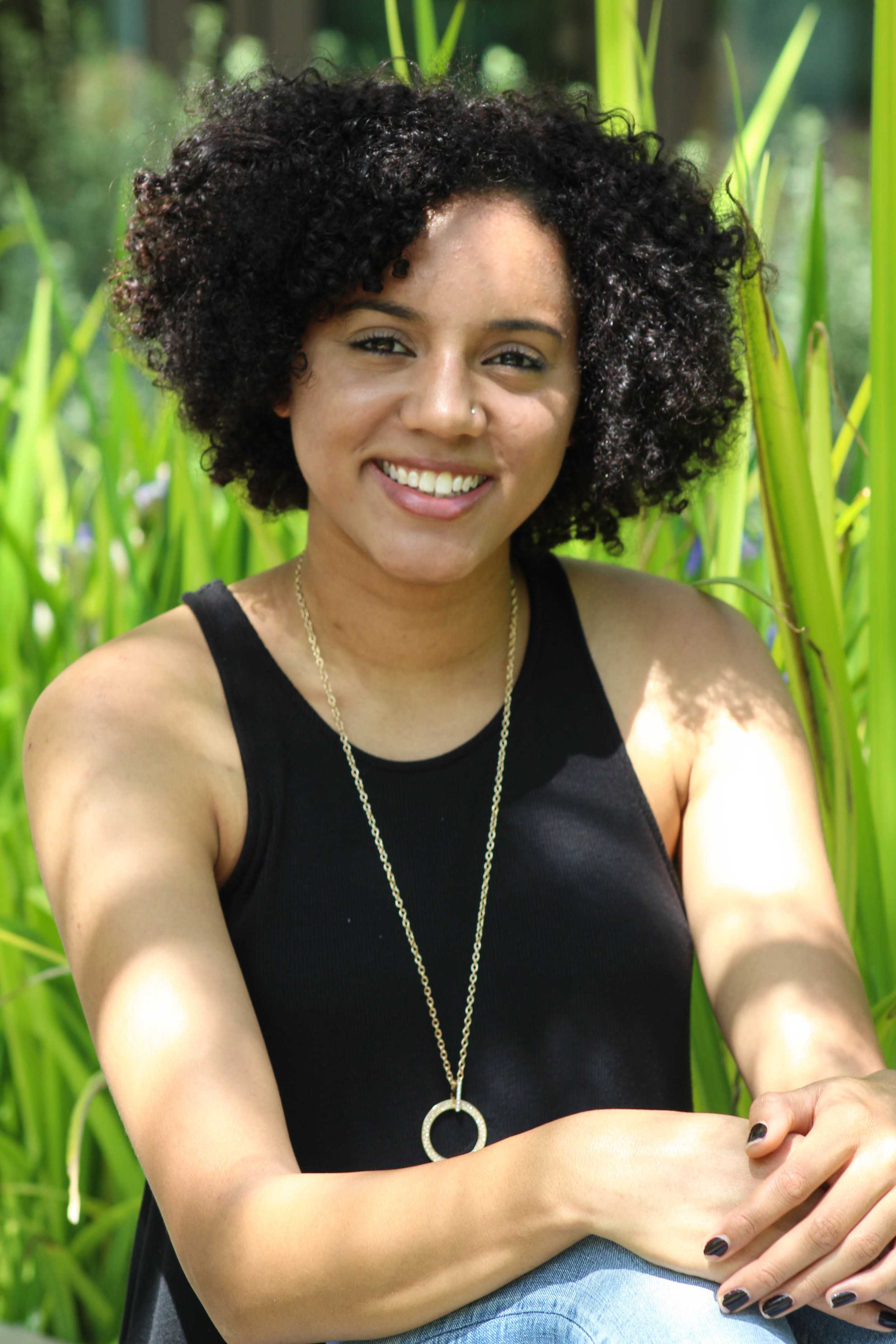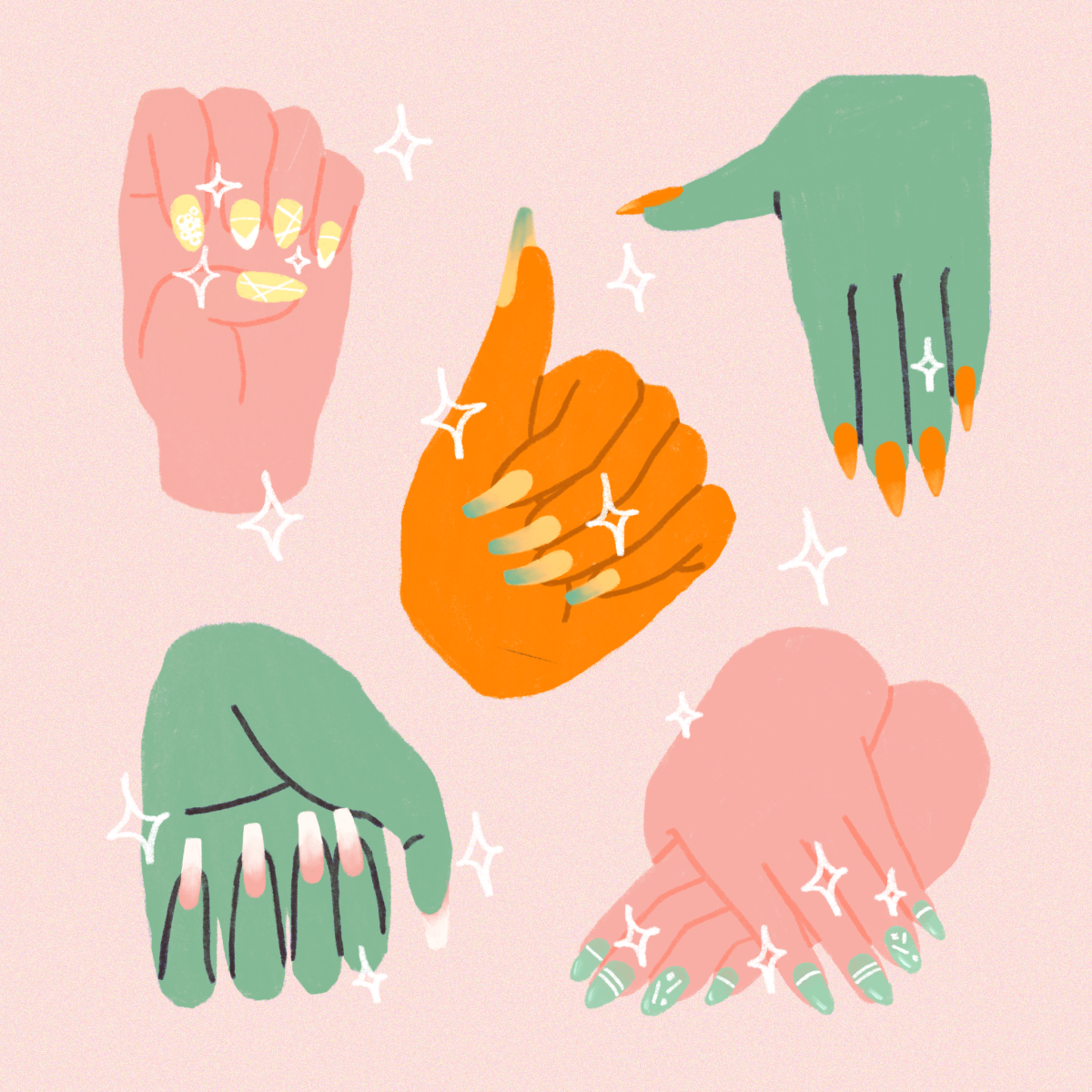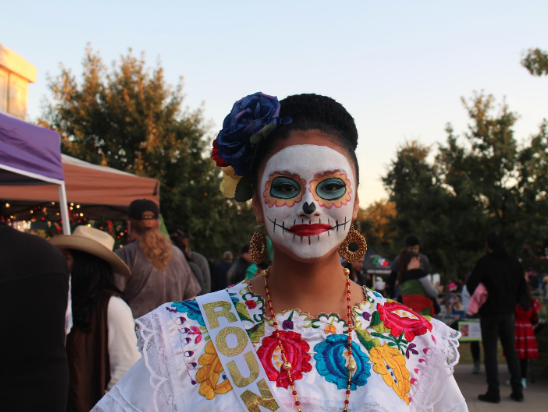Jasmine Barnes and Marina Habashi enjoying the wind flow through their curls.
Editor’s Note: This story originally appeared in Digital Issue V.
Hidden between the Texas Union and the Flawn Academic Center is a courtyard where each day hundreds of students pass through for lunch, coffee or to catch up with friends. As the quad fills with its midday rush, international relations sophomore Julia Araujo walks underneath the trees with the wind blowing through her curly hair.
Story by Itohan Osagie
Photos by Beverly Perez
For people like Araujo, hair acts as a distinguishable feature that makes them instantly recognizable, though in many cases having curly hair holds a negative connotation. “Okay, one thing I hate about curly hair is that whenever these stupid things fall they get stuck in your curls,” Araujo says with a laugh, as she removes fallen leaves from her hair.
Araujo says she co-washes her hair, meaning she often uses conditioner instead of shampoo to wash her hair. She also says she uses very little product after washing. “It made my hair much healthier,” Araujo says. “My curls look a lot better when I do nothing to my hair.”
Although Araujo now jokes about the downside of having curly hair, she says growing up she “really hated it.” She says growing up she thought it was harder to manage and “nobody else had curly hair.”
This sentiment is shared by many other girls and women in the curly-haired community, such as journalism sophomore Brianna Stone and sociology sophomore Jasmine Barnes. Both women used relaxers to chemically straighten their curls.
Stone, who grew up in a biracial family in a Dallas suburb, says she attended a predominantly white high school. Similarly, Barnes says she was the only black girl in her Houston private school’s graduating class. The influence of an “all-white environment” made it seem as though curly hair was a rarity and discouraged her from wearing her hair with its natural texture.
In 2012, women on YouTube ignited “the big chop” movement, cutting the part of their hair that is permed or relaxed. This prompted other women to discard their chemically damaged hair. Eventually Stone and Barnes determined they too would start fresh and bear their natural texture.
Stone says she wanted her hair to return to its natural, curly texture, but the relaxers had damaged it to an irreparable state. In order to regain her curls, she says there was no other option but to cut it all off and start over. “I felt like it was the only way,” she says. “It was just random because I had slowly been trimming it, but one day I would see a straight piece and then cut it. And then before I knew it I had cut it all off.”
Barnes says her transition to natural hair started a few months before the night of her junior prom, which was when she finally decided to get rid of her relaxed hair completely. “I was at home and I was just like, ‘Let’s just cut it off. Let’s just do it today,’” Barnes says.
Habashi says she relies on “lots and lots of leave-in conditioner.” “If I don’t do anything to it, it’s really bad, really frizzy,” Habashi says. She also incorporates oils, such as argan and coconut oil, into her hair routine.
Moving forward with the decision to wear hair with its natural texture reveals the westernized preference of having straight hair through the fear of scrutiny by those who challenge it. Not only does Barnes say she endured “one of the scariest days of my life” when she braved school the Monday morning after her big chop, but she believes there is so much identity attached to hair, whether we want to admit it or not.
Coming from an Egyptian background where straight hair is the preferred hair texture, sociology freshman Marina Habashi says her mother blatantly disapproved of her wanting to wear her hair natural after she decided to stop straightening her curly hair.
After spending a year revitalizing the damage to her hair, Habashi says she restored her “perfect curls,” and eventually her mom became more accepting of her natural hair. “During the time of recovery my mom hated my hair, she would always criticize me for it,” she says. “My hair went back to normal and that’s when she started loving it again.”
Habashi’s experience with curly hair highlights a common misconception of natural hair in the United States. Stone says for many, the perception is that, “Whenever people hear the term natural, the first thing they think is black girls.” But being natural isn’t just exclusive to those of African descent.
While many women choose to straighten or change the texture of their hair for a variety of reasons, Barnes says the emphasis of the movement on black hair is tied to both the stark difference in appearance and the political implication associated with natural black hair.
“Coconut oil is life,” Barnes says. “I feel like no matter your hair texture you should use coconut oil.” When looking for a product that makes detangling curly hair easier, she says the Aussie Moist deep conditioner is really cheap and works very well.
“I feel like the conversation about natural hair has been focused largely on African American and black women, because it’s so drastically different from the way most black women wore their hair,” she says. “The natural hair conversation, in the United States specifically, there’s a lot of race involved in it. The afro is associated with the 1960s politics, and the Black Panthers.”
Barnes admits that so far the discussion has not been “necessarily inclusive of all the different narratives of natural hair,” but notes that certain types of curly hair are glorified more than others.
As more countries adopt western culture, they perceive straight hair as the pinnacle of beauty and want to emulate that standard. In her Egyptian church, Habashi says while curly hair is a normality among the people, many women do not wear their natural hair. “Almost all Egyptians have curly hair,” Habashi says. “It’s just not seen as pretty, which I think is a problem.” Likewise, Araujo, who was born in Brazil, says that though many Brazilians do not have the resources to alter their hair texture, they distinguish “this vision of American people as having straight hair.”
In comparison, Araujo says UT’s population, which is 45 percent white, does not portray a population that is as diverse as living in an actual city. However, after coming from a predominantly white private school, Barnes says she felt more affirmed when she stepped onto the UT campus and saw other people who shared and embraced her natural hair texture. “Since I’ve been here I feel like I have more friends who are natural, and that’s nice because you have people to complain with and talk about techniques with and see yourself in,” she says.
Having a community of other girls with natural hair is an encouragement for Stone, who says even the smallest interaction with another curly-haired girl on campus is a source of inspiration for her. “If you meet someone, it’s a conversation starter, something that you can relate to,” she says. “It just makes me happy seeing other girls that go through the same hair struggles I do, even though we have all different textures of hair.”
“The main thing is learning patience because having curly hair takes work,” Stone says. For maintaining her natural hair she opts for products that are sulfate and paraben free, instead of “the cheapest box of whatever.” Stone says she uses almost everything in Shea Moisture’s coconut and hibiscus line.
While advancing in her curly hair journey, Barnes says getting accustomed to her hair texture was a challenge after going through the social aspect of wearing her curly hair out. “It’s been the most rewarding thing, but the hardest thing too, because I didn’t know what I was doing,” she says. “The first year especially it was really difficult because I didn’t know what my hair was like.”
Every person’s curly hair reflects their individuality with a unique texture or curl and it needs certain care that is primarily achieved through trial and error. For Barnes and many other women, a large part of the learning process required them to grow in the familiarity of their hair texture as they figured out what works and what doesn’t.
After almost three years of wearing her natural curls, Barnes says she hopes she can be a positive impact to other girls with natural hair, but that her decision to go natural was a decision she made for herself. “At the end of the day, for me at least, when I cut my hair off it was for me,” she says. “It was a thing I did just for me. I did that so that I could remove myself from that negative mindset that I needed to have a certain type of hair to be beautiful or powerful.”
Breaking away from the standard of beauty that praises straight hair poses inevitable difficulties — social, emotional and physical — but as Stone completes her first year of wearing curly hair, she says she realized it will grow back and it’s not something to obsess over. “It’s definitely made me more secure about myself and given me more confidence because regardless of whether my hair is straight, curly, short or long, I feel comfortable in my own skin,” she says.
Ultimately, there comes a point when natural-hair wearers find a greater appreciation of the natural texture, despite the length, curl or coarseness. Araujo and Habashi say they love their curly hair because it makes them more distinguishable and more memorable. “I like it even better because I feel like people notice you more and they remember you because you look different,” Araujo says.
“I think my hair has become part of my mark,” Habashi says. “My hair is my crown. I love it, and y’all can’t change anything about that.”
Maintaining natural hair isn’t a skill learned overnight. It takes time and trial and error to come up with the perfect natural hair regimen. The women from “Textured Hair Stories” shared some of their tips for maintaining curly hair.































